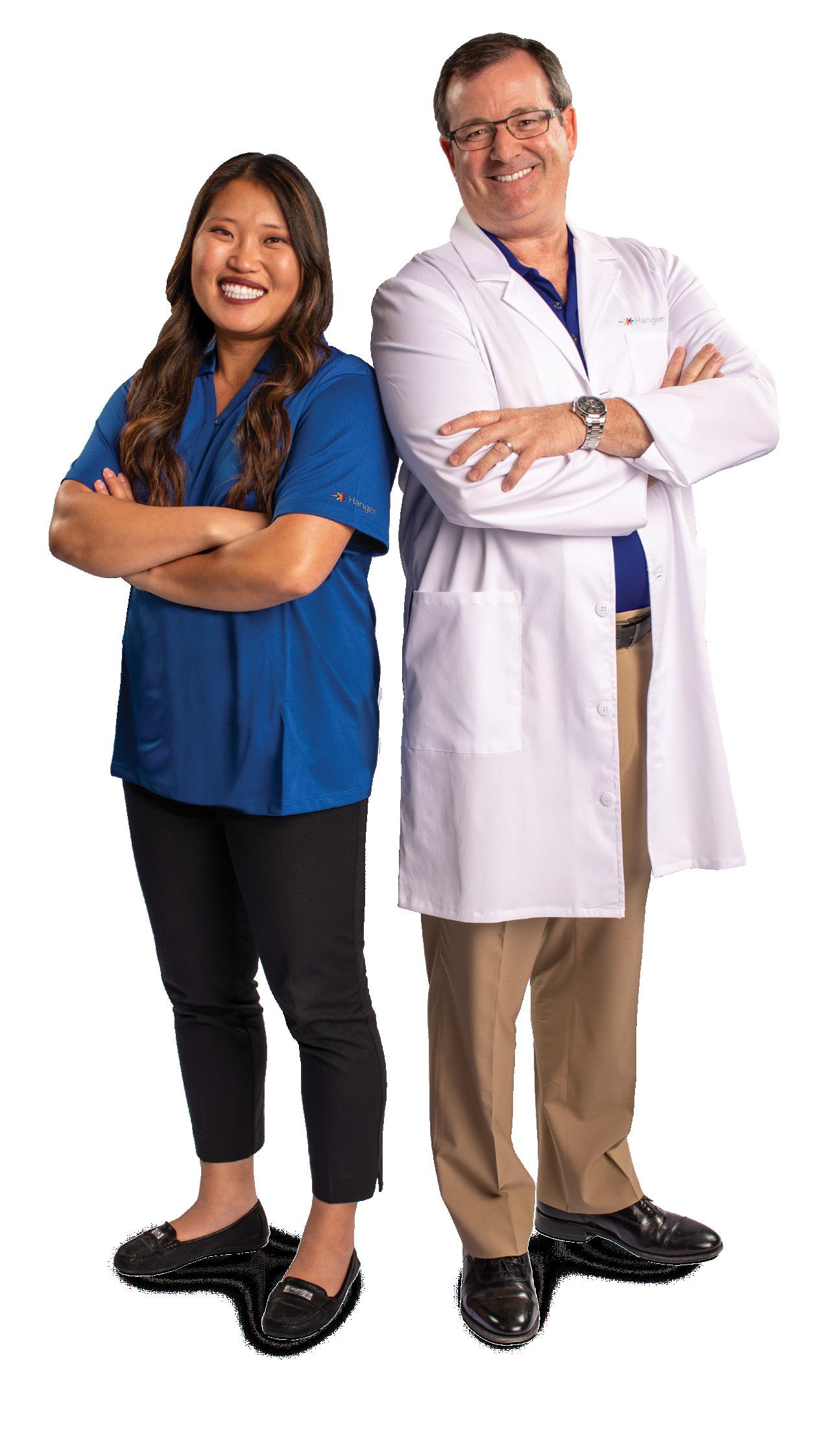Happenings RESEARCH ROUNDUP
Brain Stimulation Speeds Robotic Arm Control
10
JUNE/JULY 2021 | O&P ALMANAC
PHOTOS: UPMC/The University of Pittsburgh Schools of the Health Sciences
Bioengineers from the University of Pittsburgh Rehab Neural Engineering Labs are studying how adding brain stimulation that evokes tactile sensations makes it easier for a prosthetic user to manipulate a brain-controlled robotic arm. The research team experimented with supplementing vision with artificial tactile perception and found that it could reduce time spent grasping and transferring objects by half. “The primary goal of this study was to evaluate whether restored sensory feedback improved the ability to use a brain-computer interface-controlled robot for functional tasks involving picking up and transporting objects,” explained Jennifer Collinger, PhD, an associate professor at University of Pittsburgh’s Department of Physical Medicine Robert Gaunt, University of Pittsburgh associate professor, touches and Rehabilitation and a study author. the fingers of the robotic hand, which Copeland can “feel.” In the experiment, Nathan Copeland, who has tetraplegia, used an implanted bidirectional since there was little to no learning required to use the brain-computer interface that recorded signals from system,” said Collinger. “The performance improvement with the motor cortex to enable control of the robotic arm and sensory feedback was immediate. We saw that completion provided sensory feedback about grasp force by stimulating times on a clinical assessment of upper-limb function, the electrodes implanted in the somatosensory cortex, the Action Research Arm Test, improved significantly from a area of the brain that typically processes signals related to median time of approximately 20 seconds to 10 seconds.” touch. After the arrays, which enable him to receive tactile The researchers noted that the performance improvefeedback, were implanted, Copeland was able to pick up ments came from a reduction in the amount of time spent and transfer various objects from a table to a raised plattrying to grasp the object, “which is when we would expect form twice as fast compared to tests without stimulation. tactile information to have the largest impact,” she said. “The bidirectional brain-computer interface seemed to “Intracortical brain-computer interfaces can enable tap into natural sensorimotor control networks in the brain sophisticated control of a robotic arm that allows a person with upper-limb impairments to pick up and manipulate objects, and this ability is significantly improved when we provide sensory feedback about the forces experienced in the robotic hand,” added Collinger. The study, published in May in Science, supports further development of bidirectional brain-computer interfaces such that they can be translated into clinical use, she says. “Our work so far has been conducted with people with tetraplegia due to spinal cord injury. For people with limb loss, a brain-computer interface would have to deliver a significant improvement in function over nonimplanted methods such as myoelectric conCopeland uses the brain-computer interface to control the trol,” Collinger said. “For individuals with very high-level robotic arm to perform reaching and grasping tasks. arm amputations, current control options are limited.”









